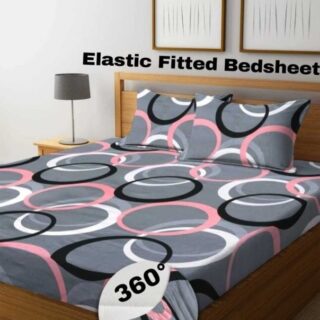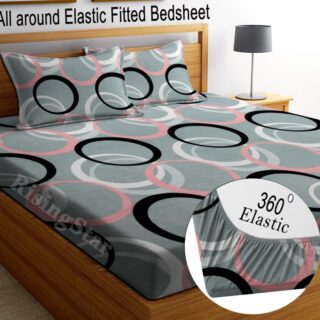Category
Popular Articles
- AI (9)
- Android (35)
- App Suggest (4)
- Apple (5)
- Apple TV (2)
- Bluetooth (2)
- Cars (2)
- ChatGpt (1)
- Did you know? (1)
- E-Commerce News (1)
- Ecommerce Websites business (7)
- Electronics Shopping (5)
- Fashion Tips (3)
- Gaming (3)
- Google Gemini (3)
- Hair Care Tips (2)
- How to (13)
- iCloud (1)
- Infotainment System (1)
- Iphone (93)
- Job Posting (1)
- Mac (18)
- Mobile Games (1)
- Netflix (1)
- Online Shopping Websites (2)
- Product Reviews (3)
- Roku TV (4)
- Samsung (7)
- Shopping Tips (10)
- Tech (58)
- Windows 11 (4)
Discounted Products
-
 Leo Creation 144 TC Cotton Double Jaipuri Prints Flat Bedsheet(Pack of 1, Blue, Gree, Red, Grey, Light Grey)
Leo Creation 144 TC Cotton Double Jaipuri Prints Flat Bedsheet(Pack of 1, Blue, Gree, Red, Grey, Light Grey)
₹2,999.00Original price was: ₹2,999.00.₹329.00Current price is: ₹329.00. -
 Home Garage 210 TC Cotton King Floral Fitted (Elastic) Bedsheet(Pack of 1, Grey)
Home Garage 210 TC Cotton King Floral Fitted (Elastic) Bedsheet(Pack of 1, Grey)
₹999.00Original price was: ₹999.00.₹299.00Current price is: ₹299.00. -
 Goodrik 140 TC Cotton Double 3D Printed Flat Bedsheet(Pack of 1, Brown)
Goodrik 140 TC Cotton Double 3D Printed Flat Bedsheet(Pack of 1, Brown)
₹499.00Original price was: ₹499.00.₹229.00Current price is: ₹229.00. -
 GLOBALSHOP 350 TC Microfiber Double Floral Flat Bedsheet(Pack of 1, Multicolor)
GLOBALSHOP 350 TC Microfiber Double Floral Flat Bedsheet(Pack of 1, Multicolor)
₹1,250.00Original price was: ₹1,250.00.₹263.00Current price is: ₹263.00. -
 RisingStar 250 TC Microfiber King Printed Fitted (Elastic) Bedsheet(Pack of 1, FITTED-ROUND-CIRCLES-PREMIUM)
RisingStar 250 TC Microfiber King Printed Fitted (Elastic) Bedsheet(Pack of 1, FITTED-ROUND-CIRCLES-PREMIUM)
₹2,299.00Original price was: ₹2,299.00.₹299.00Current price is: ₹299.00. -
 Home Garage 210 TC Cotton King Floral Fitted (Elastic) Bedsheet(Pack of 1, Fitted Black Green)
Home Garage 210 TC Cotton King Floral Fitted (Elastic) Bedsheet(Pack of 1, Fitted Black Green)
₹1,299.00Original price was: ₹1,299.00.₹299.00Current price is: ₹299.00. -
 Home Garage 180 TC Cotton King 3D Printed Flat Bedsheet(Pack of 1, White)
Home Garage 180 TC Cotton King 3D Printed Flat Bedsheet(Pack of 1, White)
₹999.00Original price was: ₹999.00.₹229.00Current price is: ₹229.00. -
 Home Sizzler 153 cm (5 ft) Polyester Room Darkening Window Curtain (Pack Of 2)(Floral, Maroon)
Home Sizzler 153 cm (5 ft) Polyester Room Darkening Window Curtain (Pack Of 2)(Floral, Maroon)
₹799.00Original price was: ₹799.00.₹299.00Current price is: ₹299.00. -
 Panipat Textile Hub 152.4 cm (5 ft) Polyester Window Curtain (Pack Of 2)(Solid, Aqua)
Panipat Textile Hub 152.4 cm (5 ft) Polyester Window Curtain (Pack Of 2)(Solid, Aqua)
₹1,899.00Original price was: ₹1,899.00.₹299.00Current price is: ₹299.00. -
 Home Sizzler 214 cm (7 ft) Polyester Semi Transparent Door Curtain (Pack Of 2)(Floral, Maroon)
Home Sizzler 214 cm (7 ft) Polyester Semi Transparent Door Curtain (Pack Of 2)(Floral, Maroon)
₹1,199.00Original price was: ₹1,199.00.₹399.00Current price is: ₹399.00. -
 Home Sizzler 153 cm (5 ft) Polyester Room Darkening Window Curtain (Pack Of 2)(Floral, Brown)
Home Sizzler 153 cm (5 ft) Polyester Room Darkening Window Curtain (Pack Of 2)(Floral, Brown)
₹799.00Original price was: ₹799.00.₹299.00Current price is: ₹299.00. -
 Stella Creations 214 cm (7 ft) Polyester Room Darkening Door Curtain (Pack Of 2)(Abstract, Brown)
Stella Creations 214 cm (7 ft) Polyester Room Darkening Door Curtain (Pack Of 2)(Abstract, Brown)
₹1,299.00Original price was: ₹1,299.00.₹449.00Current price is: ₹449.00. -
 Homefab India 152.5 cm (5 ft) Polyester Room Darkening Window Curtain (Pack Of 2)(Floral, Light Blue)
Homefab India 152.5 cm (5 ft) Polyester Room Darkening Window Curtain (Pack Of 2)(Floral, Light Blue)
₹1,199.00Original price was: ₹1,199.00.₹319.00Current price is: ₹319.00. -
 Urban Home 214 cm (7 ft) PVC Transparent Door Curtain Single Curtain(Solid, Off White)
Urban Home 214 cm (7 ft) PVC Transparent Door Curtain Single Curtain(Solid, Off White)
₹699.00Original price was: ₹699.00.₹203.00Current price is: ₹203.00. -
 Panipat Textile Hub 213 cm (7 ft) Polyester Door Curtain (Pack Of 2)(Solid, Brown)
Panipat Textile Hub 213 cm (7 ft) Polyester Door Curtain (Pack Of 2)(Solid, Brown)
₹1,199.00Original price was: ₹1,199.00.₹349.00Current price is: ₹349.00.
Affiliate Links
Promotion

Your MacBook is a powerful, beautifully engineered tool, and if you’re like most of us, it’s the central hub of your digital life. It holds your work, your creative projects, and your connection to friends and family. But are your daily habits secretly chipping away at its longevity? Many of us make well-intentioned mistakes that can lead to a swollen battery, a sluggish performance, or a premature demise for a device that should last for years.
As someone who has relied on MacBooks through demanding careers and now uses them to manage a busy household, I’ve learned—sometimes the hard way—that longevity isn’t just about luck. It’s about strategy. Let’s break down the five most common mistakes that shorten your MacBook’s lifespan and the simple, expert-backed shifts you can make to keep it running smoothly for the long haul.
Mistake #1: Treating Your MacBook Like a Desktop (The “Clamshell Mode” Crime)
This is perhaps the most widespread and damaging habit. You get home, connect your MacBook to an external monitor, and close the lid, using it in what’s known as “clamshell mode.” It seems efficient, right? You’re saving desk space and using a bigger screen. However, this practice quietly cooks your computer from the inside out.
The Science Behind the Heat:
Your MacBook’s primary cooling system relies on passive heat dissipation through the aluminum chassis, particularly the keyboard deck and the bottom case. The logic board and processors are strategically placed to transfer heat to these large metal surfaces, which act as a giant heatsink. When you close the lid, you effectively smother your MacBook’s main cooling vent. The heat generated by the processor and other components has nowhere to go, causing internal temperatures to soar.
The Consequences:
-
Thermal Stress: Consistent high heat is the enemy of all electronics. It accelerates the degradation of the solder joints that hold components onto the logic board, a common point of failure in older machines.
-
Battery Degradation: Lithium-ion batteries have a sworn enemy: heat. Prolonged exposure to high temperatures, especially while charging, is the single fastest way to permanently reduce your battery’s capacity and overall lifespan. Apple itself states that the ideal temperature for your device is between 62° and 72° F (16° to 22° C).
-
Performance Throttling: Modern MacBooks have safeguards. When they get too hot, the system will forcibly slow down the processor (a process called “thermal throttling”) to prevent physical damage. So, that expensive, powerful M-series chip you paid for? In clamshell mode, it might not be running anywhere near its potential.
The Expert Fix:
If you must use an external display, keep the lid open. Even a crack is better than nothing. This allows the keyboard deck to effectively radiate heat. If space is an absolute premium, invest in a laptop stand or a vertical dock that promotes significant airflow around the entire device. For extended, intensive work sessions, a dedicated laptop cooling pad can be a worthwhile investment.
Mistake #2: The “Plugged-In All the Time” Mindset
We’ve been trained to think that keeping a device at 100% is the goal. With modern lithium-ion batteries, this is exactly wrong. Keeping your MacBook permanently plugged in, especially while it’s hot, forces the battery into a state of “high-load trickle charging,” which creates significant chemical stress.
The Science Behind Battery Health:
Lithium-ion batteries are happiest in the middle. The most significant wear occurs at the extreme ends of the charge spectrum—consistently sitting at 100% or draining to 0%. When you keep your laptop plugged in continuously at full charge, you are maintaining a high internal voltage, which stresses the battery’s chemistry and accelerates the loss of its maximum charge capacity.
The Consequences:
You’ll see your battery health plummet in the “System Information” menu within a year or two. You’ll get the dreaded “Service Recommended” warning, and your laptop will become a desktop—unable to hold a charge for more than a few minutes when you truly need portability.
The Expert Fix:
This is where Apple’s built-in intelligence is your best friend.
-
Enable Optimized Battery Charging: Go to System Settings > Battery > Battery Health… and make sure “Optimized Battery Charging” is turned on. This allows your macOS to learn your daily routine. If you typically unplug your laptop at 8 AM, it will charge to 80% overnight and only complete the final 20% right before you wake up, minimizing the time spent at 100%.
-
Manual Management: For the truly proactive, if you know you’ll be desk-bound for a week, consider unplugging once it reaches 80% and only plugging it back in when it drops to around 40-50%. This keeps the battery in its sweet spot. For longer-term storage, Apple recommends storing the device with a 50% charge.
Mistake #3: Yanking the Cable by the Cord (The Port Killer)
It seems trivial, but how you disconnect accessories is a major test of your device stewardship. Grabbing the cable itself and pulling it straight out might seem efficient, but it places immense lateral stress on the port’s delicate internal pins.
The Science Behind the Strain:
The USB-C ports on your MacBook are soldered directly onto the main logic board. They are designed to handle force in one direction: straight out. When you pull at an angle by yanking the cord, you are levering against those tiny solder points. Over time, this can crack the solder joints, loosen the port’s housing, or, in a worst-case scenario, cause a short circuit. A damaged logic board is one of the most expensive repairs a MacBook can face.
The Consequences:
A loose port that no longer reliably charges or transfers data. In severe cases, it can lead to a completely dead port or a logic board failure, requiring a costly repair that often exceeds the value of an older MacBook.
The Expert Fix:
Always grasp the plug itself, not the cable. Firmly grip the hard, plastic (or metal) connector and pull it straight out from the port. This applies zero lateral force and ensures the long-term integrity of the connection. Make this a non-negotiable habit for every cable, every time.
Mistake #4: Letting Your Storage Hit 100% Full
In the pursuit of a minimalist desktop, many of us drag everything into the Trash and think the job is done. But the Trash Bin is a folder, not a black hole. Files sitting in the Trash are still occupying valuable space on your SSD.
The Science Behind SSD Wear:
Your MacBook’s Solid State Drive (SSD) has a finite lifespan, measured in terabytes written (TBW). When your drive is nearly full, the operating system has to work much harder to find free blocks to write new data. This increases the “write amplification” on the drive, essentially causing it to wear out faster over time. Furthermore, a full drive prevents macOS from using free space for essential background tasks like virtual memory (swap files), which can lead to system-wide slowdowns, freezing, and application crashes.
The Consequences:
A perpetually full drive not only makes your MacBook feel sluggish and unstable but also actively shortens the operational life of one of its most critical and non-replaceable components: the SSD.
The Expert Fix:
-
Empty the Trash Regularly: Make it a weekly ritual. Right-click the Trash icon in your dock and select “Empty Trash.”
-
Manage Storage Proactively: Go to ** > About This Mac > Storage > Manage…**. This powerful tool shows you exactly what is consuming space, from large files and downloads to old iOS backups. Use it to:
-
Optimize Storage: Automatically remove watched iTunes movies and TV shows.
-
Review and delete old files in your Downloads folder.
-
Enable iCloud Desktop & Documents to offload lesser-used files to the cloud.
-
-
Use a dedicated cleaner tool like CleanMyMac X or DaisyDisk for a deeper, more visual analysis of your storage.
Mistake #5: Ignoring macOS Updates and Physical Cleanliness
“It works fine, why update?” This mindset leaves your MacBook vulnerable on two fronts: digital security and physical contamination.
The Science Behind Updates and Grime:
-
Software: macOS updates are not just about new features. They almost always include critical security patches that fix vulnerabilities that hackers could exploit. Running an outdated OS is like leaving your front door unlocked in a busy neighborhood. Updates also contain stability fixes and performance enhancements that can resolve conflicts and improve efficiency, reducing unnecessary strain on your hardware.
-
Hardware: Dust is an insulator. As it builds up in the vents and on the internal components, it traps heat. This directly contributes to the thermal stress problem outlined in Mistake #1. Furthermore, debris on the keyboard can work its way under the key mechanisms, leading to sticky or non-responsive keys.
The Consequences:
Ignoring updates can lead to malware infections, software instability, and missed performance optimizations. Ignoring physical cleanliness leads to overheating and potential keyboard failure.
The Expert Fix:
-
For Software: Go to System Settings > Software Update and enable automatic updates, or at least check it monthly. Install all recommended updates, including the smaller “Rapid Security Responses.”
-
For Hardware: Power down your MacBook completely and unplug it. Use a can of compressed air to gently blow out the vents on the side and bottom. To clean the screen and aluminum body, use only a soft, lint-free cloth slightly dampened with water. Never spray cleaners directly onto the MacBook. For the keyboard, turn the laptop sideways and gently tap it to dislodge crumbs, followed by a pass with the compressed air.
By avoiding these five common mistakes, you’re not just maintaining a device; you’re protecting an investment and ensuring that your trusted digital companion is as powerful and reliable in five years as it is today. A little proactive care goes an incredibly long way.
Written by Bazaronweb
Latest Tech Articles
- How to build a sustainable wardrobe on a budget

- AI for Personal Finance: Using Bots to Budget, Invest, and Plan

- Ethical AI Usage: Data Privacy, Automation, and the Future of Work

- AI Writing Tools vs. Automation Platforms: The Ultimate Guide to Boosting Productivity in 2026

- How to Use AI (Like ChatGPT) for Daily Workflows, Content Creation, and Side Projects

Products
-
![Apple Watch Ultra 3 [GPS + Cellular 49mm] Running & Multisport Smartwatch w/Rugged Titanium Case w/Black Titanium Milanese Loop - M. Satellite Communications, Advanced Health & Fitness Tracking](https://bazaronweb.com/retailstores/wp-content/uploads/2025/09/apple-watch-320x320.jpg) Apple Watch Ultra 3 [GPS + Cellular 49mm] Running & Multisport Smartwatch w/Rugged Titanium Case w/Black Titanium Milanese Loop - M. Satellite Communications, Advanced Health & Fitness Tracking
Apple Watch Ultra 3 [GPS + Cellular 49mm] Running & Multisport Smartwatch w/Rugged Titanium Case w/Black Titanium Milanese Loop - M. Satellite Communications, Advanced Health & Fitness Tracking
-
 Apple iPad mini (A17 Pro): Apple Intelligence, 8.3-inch Liquid Retina Display, 256GB, Wi-Fi 6E, 12MP Front/12MP Back Camera, Touch ID, All-Day Battery Life — Purple
Apple iPad mini (A17 Pro): Apple Intelligence, 8.3-inch Liquid Retina Display, 256GB, Wi-Fi 6E, 12MP Front/12MP Back Camera, Touch ID, All-Day Battery Life — Purple
-
 Apple AirPods Max Wireless Over-Ear Headphones, Active Noise Cancelling, Transparency Mode, Personalized Spatial Audio, Dolby Atmos, Bluetooth Headphones for iPhone – Space Gray
Apple AirPods Max Wireless Over-Ear Headphones, Active Noise Cancelling, Transparency Mode, Personalized Spatial Audio, Dolby Atmos, Bluetooth Headphones for iPhone – Space Gray
-
 Apple AirPods Pro 2 Wireless Earbuds, Active Noise Cancellation, Hearing Aid Feature, Bluetooth Headphones, Transparency, Personalized Spatial Audio, High-Fidelity Sound, H2 Chip, USB-C Charging
Apple AirPods Pro 2 Wireless Earbuds, Active Noise Cancellation, Hearing Aid Feature, Bluetooth Headphones, Transparency, Personalized Spatial Audio, High-Fidelity Sound, H2 Chip, USB-C Charging
-
 Leo Creation 144 TC Cotton Double Jaipuri Prints Flat Bedsheet(Pack of 1, Blue, Gree, Red, Grey, Light Grey)
Leo Creation 144 TC Cotton Double Jaipuri Prints Flat Bedsheet(Pack of 1, Blue, Gree, Red, Grey, Light Grey)
₹2,999.00Original price was: ₹2,999.00.₹329.00Current price is: ₹329.00.
Leave a Reply